In fact, two essential concepts are pivotal in bringing ideas to life: minimum viable product (MVP) and prototype. These terms often spark curiosity and sometimes confusion among innovators and entrepreneurs.
You can explore our comprehensive guide to learn more about MVP. But in this article, we will focus more on the early-stage prototypes that are fundamental to implementing a future project. Simply put, prototype software development is like a sketch you introduce to investors to show your idea is alive and running.
While MVP and prototype serve distinct purposes, understanding the nuances between them is crucial for driving a project towards success. So, let’s get started with the overview!
What is prototype product development?
In software development, a prototype simulates the functionality and user experience (UX) of a real product for design feedback and testing. Prototypes vary in sophistication, from simple sketches to interactive models resembling actual software.
Below, you can see the image showing one of our project prototypes.
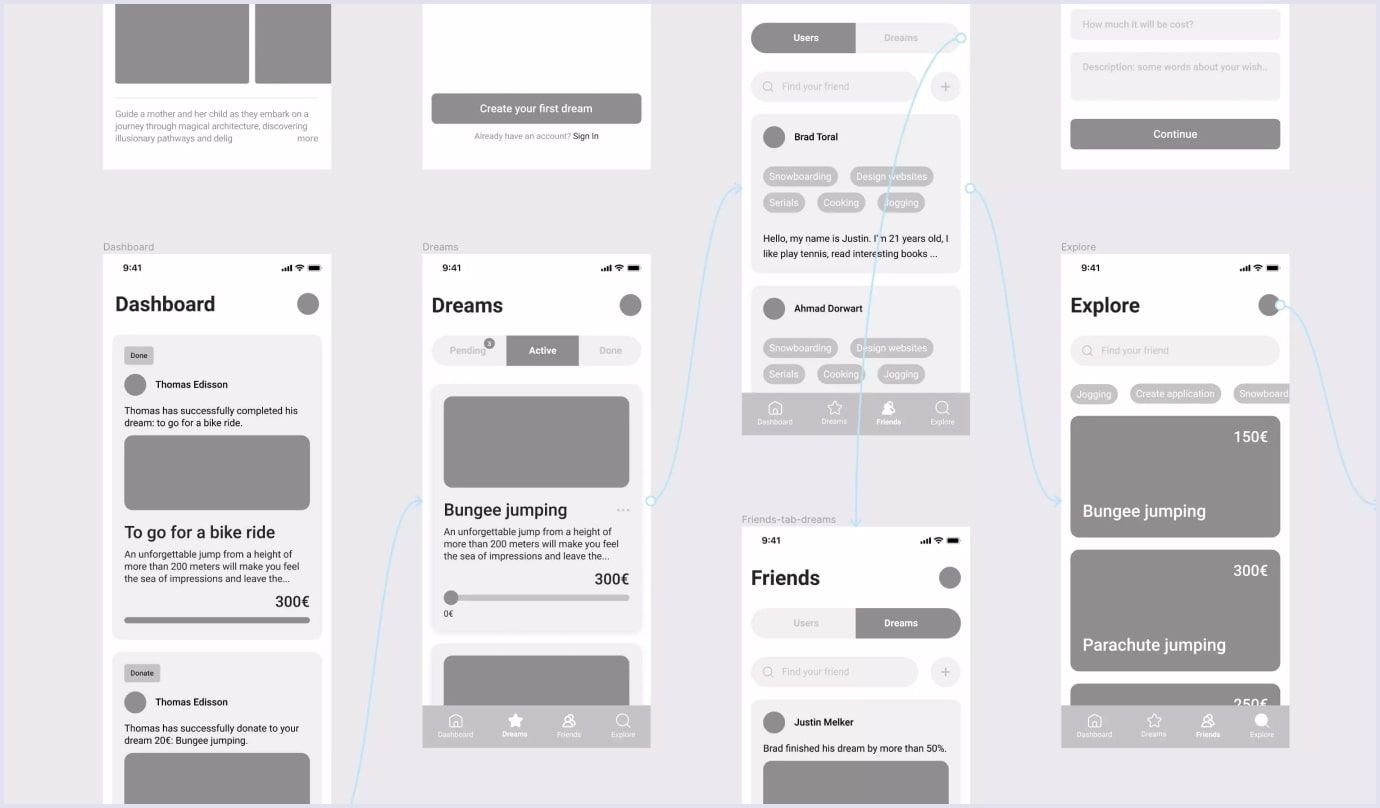
Depending on your goals, a prototype can simulate an entire mobile app or just a specific digital interaction. Prototype software development is crucial for gathering early feedback and making necessary changes before extensive coding begins.
A vivid prototype example
Below is an early prototype of the Apple Phone. Now, it is known as the iPhone. It had nothing in common with the portability but proved that Apple was ready to take the initiative in the touchscreen technology. One of the reasons Apple stands out from its competitors is its products’ advanced UI/UX design services.
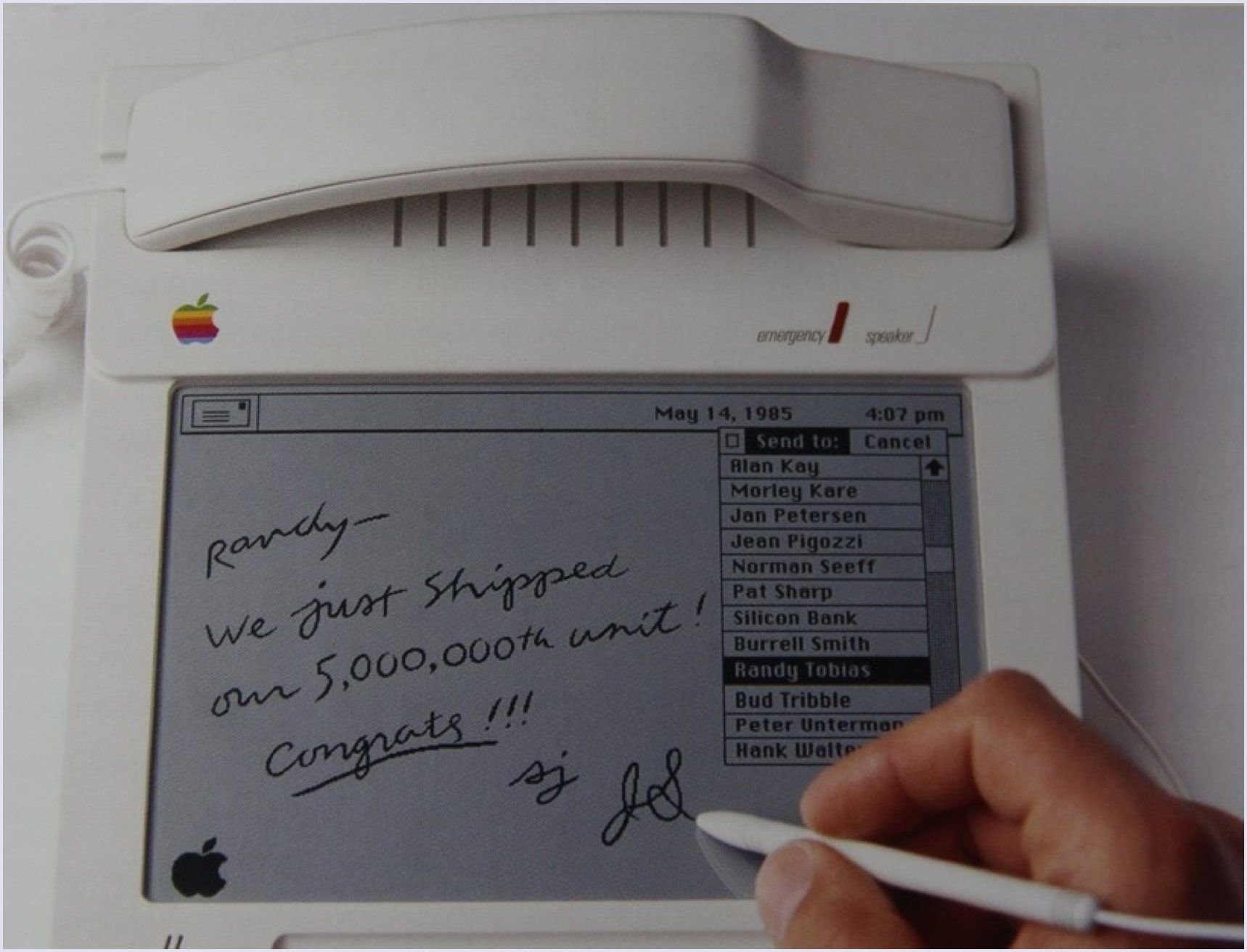
How prototyping works
There are different stages of prototype development, or you can focus on one to convey your ideas.
Paper wireframes:
- Use rudimentary sketches on paper to bring your idea to life.
- The goal is not a polished design but to clarify concepts and make crucial decisions about project scope.
Wireframes/low fidelity design:
In Codica, the prototype helps us see the functionality of our projects. For example, let’s look at the fitness progressive web application prototype.
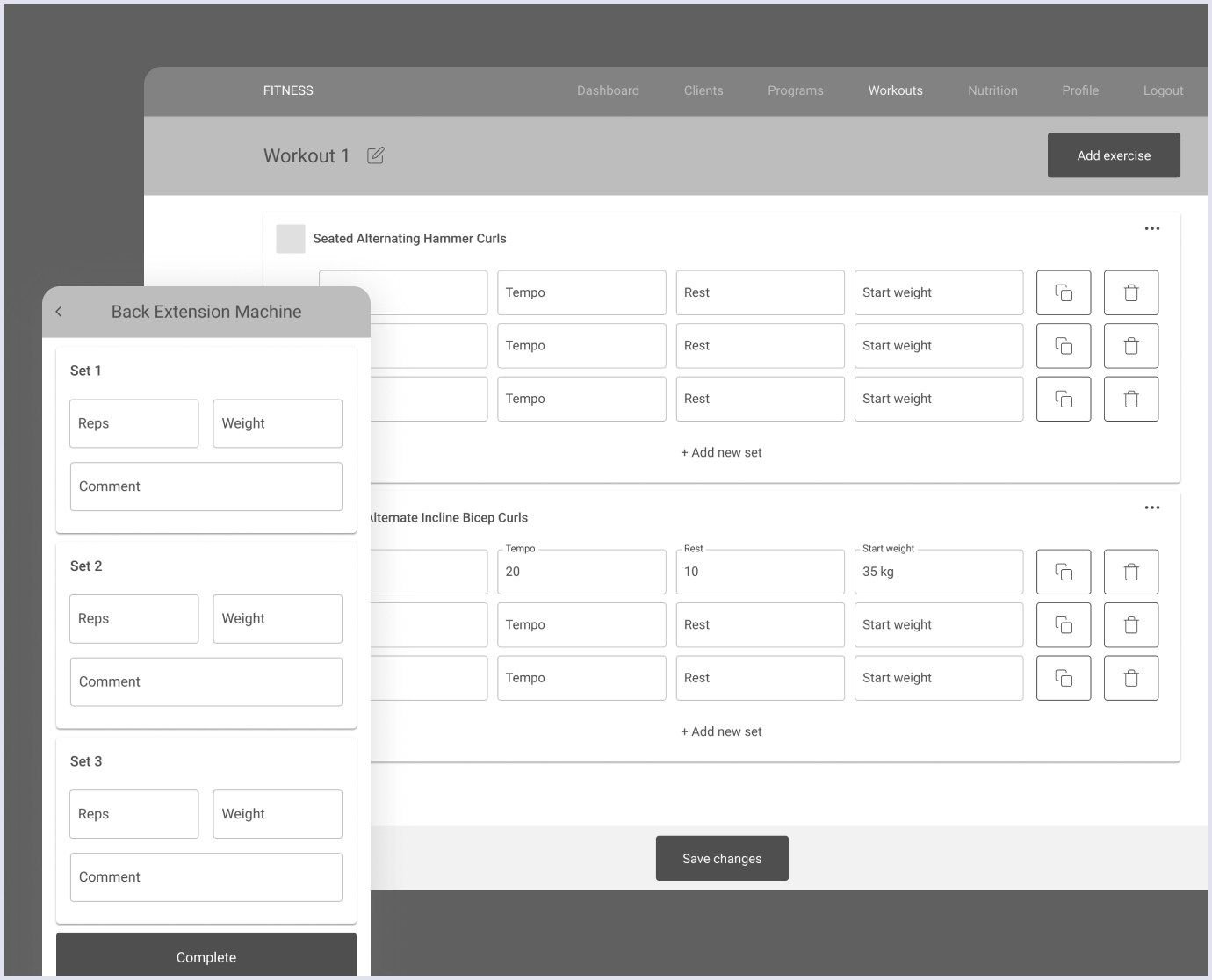
- Move from paper sketches to digital wireframes, providing skeletal outlines of the software.
- Wireframes focus on functionality, user flow, and screen relationships using tools like Invision, Sketch, Adobe, or Figma.
- They serve as communication tools for feedback during the design process.
Clickable prototypes:
Below, you can check a prototype for a job search website that our experts have developed.
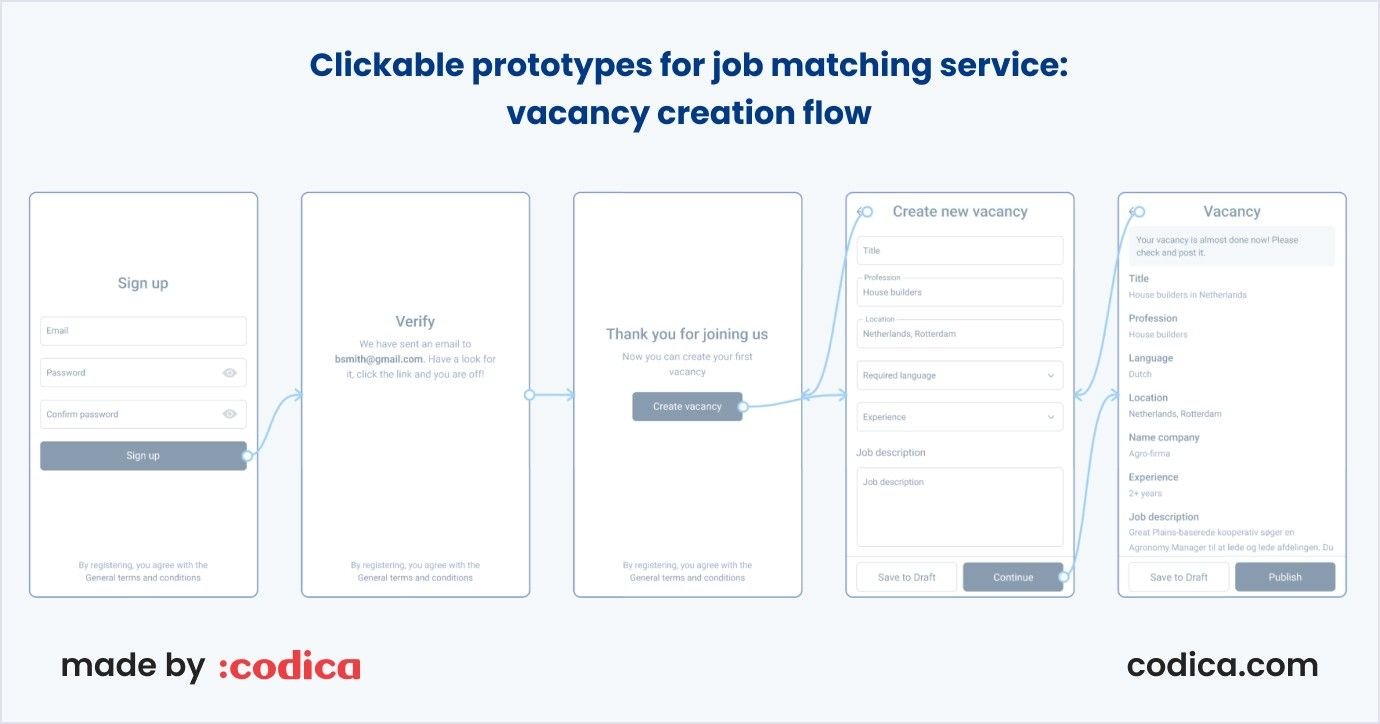
- Wireframes can evolve into clickable prototypes, interactive visual screens mimicking a working app.
- Users can interact with the prototype by clicking buttons and navigating screens without actual coding.
- Prototypes provide a clear sense of the final software’s look and feel, with flexibility for changes at this stage.
Benefits of prototype product development
Quite similar to the benefits proof of concept (PoC) brings, the benefits of creating a prototype cannot be underestimated. Thus, let’s list what creating a prototype can bring to your business.
- User feedback. Prototypes enable early interaction with users, gathering valuable feedback on design and functionality. Moreover, users can provide insights that contribute to refining the final product, ensuring it meets their needs and expectations.
- Visualization. Prototypes provide a tangible representation of the product, helping stakeholders visualize the final outcome and understand the user experience.
- Risk reduction. Identifying and addressing design flaws or functional issues early in the development process reduces the risk of costly errors later on.
- Communication. Prototypes serve as effective communication tools between different stakeholders, including developers, designers, and clients. They help convey ideas, concepts, and design decisions in a tangible and accessible manner.
Essential features of a prototype
Knowing the difference between MVPs and prototypes is crucial when building something new, like a product. They each have unique features that significantly influence how things are made. Let’s discover exciting features of prototype product development.
Elaborate user interfaces (UI)
Prototypes are like artists for how things look and feel. They create detailed versions of what the product will be like so everyone can see and understand it better. It helps make sure the design works well for users.
Fundraising
Prototypes are great at convincing people to invest money. They show off the idea in a way that makes investors excited. On the other hand, MVP development services provide different benefits, a view from the other side, etc.
Projects with a design emphasis
Prototypes are perfect for projects where design is a big deal. They let designers play around with how things should look before deciding on the final design. It’s like trying on different outfits before picking the best one.
Testing and confirming hypotheses
Prototypes are like experiments. They help test out ideas and see if they work before going all-in. This is crucial for figuring out what’s good and what needs improvement.

Main types of prototype software development models
There are several key prototype models, each serving different purposes in the iterative design process. Let’s explore them together.

Rapid prototypes: accelerating innovation
Rapid prototype development is a fast way to turn thoughts into accurate models. It is all about being speedy and effective. Using things like 3D printing or virtual simulations, quick prototyping helps explore different possibilities and improve ideas rapidly at the beginning of a project.
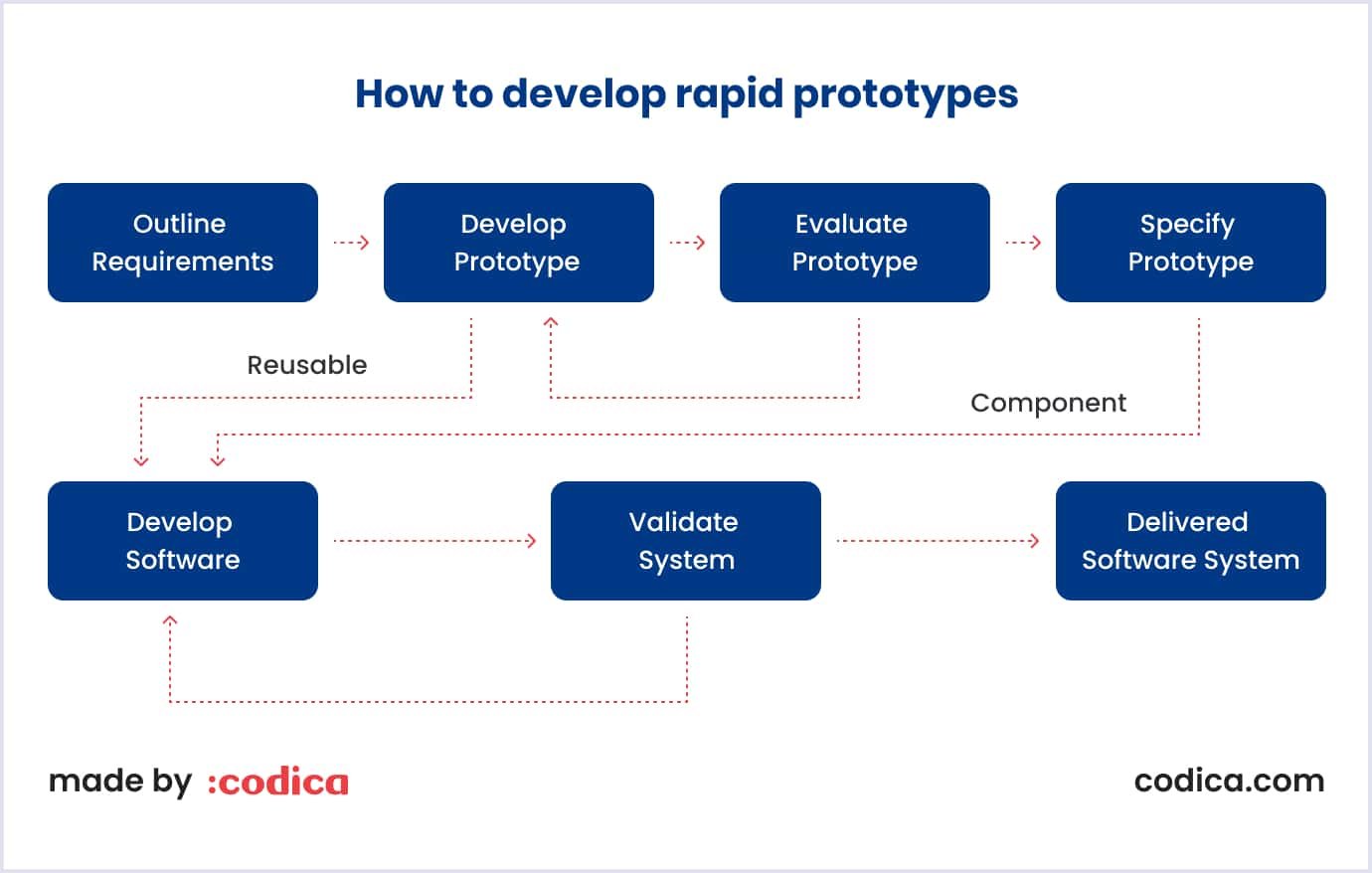
Evolutionary prototypes: adapting to change
Adaptable prototyping is about building something that can change quickly. It understands that needs might change over time. The prototype keeps growing and evolving with the project. It is excellent for places where things constantly change, and you must be flexible.

Incremental prototypes: step-by-step refinement
Step-by-step prototyping is like building a whole system bit by bit. Each time, we make one part better. This helps us make steady progress, giving us something good at every step. This is useful for big and complicated projects because it lets us fix problems early on and show results often.
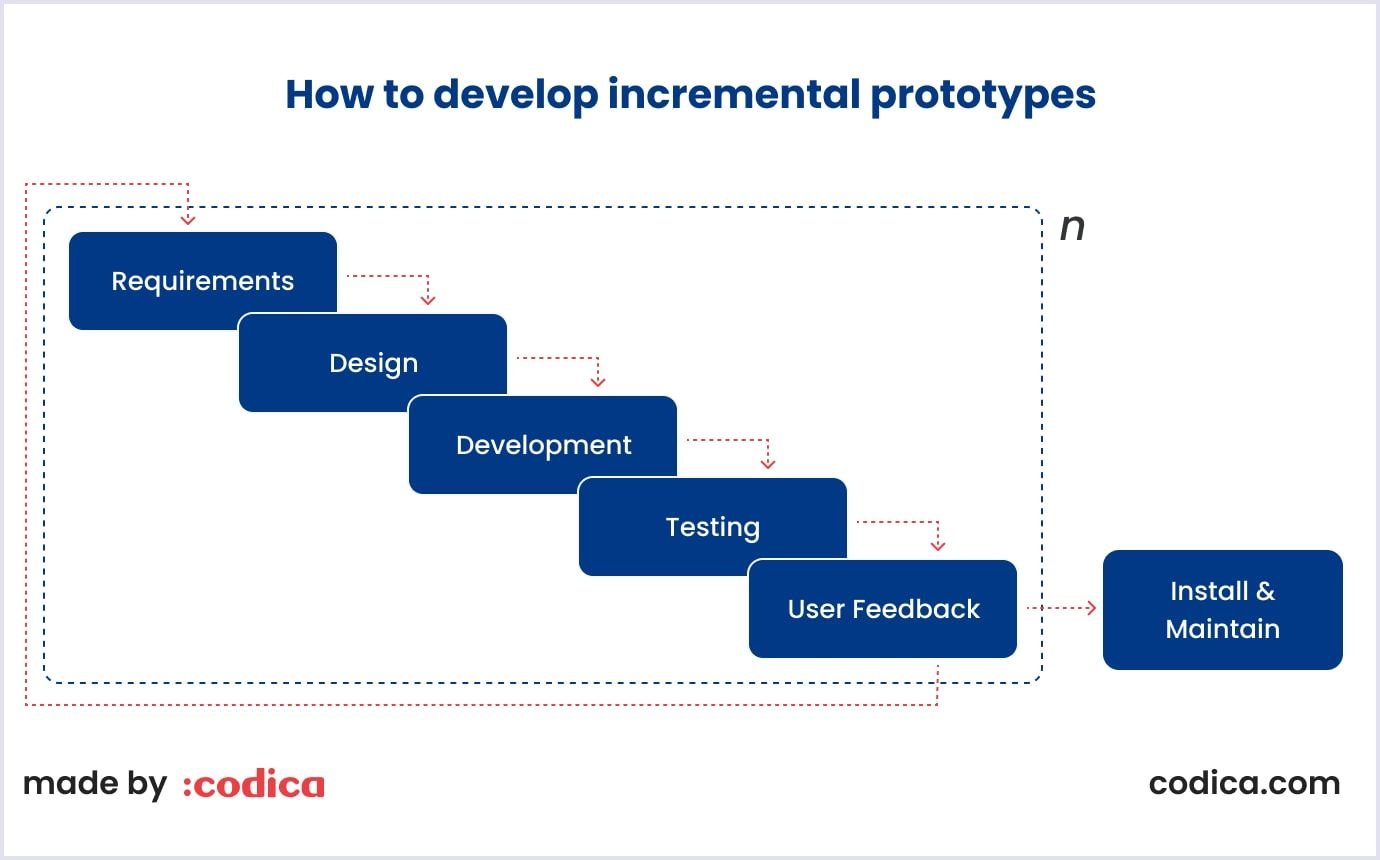
Extreme prototypes: pushing boundaries for innovation
Extreme prototyping is all about taking risks to try something new. It is not about making things perfect; it is about testing wild ideas quickly. This prototype might not work perfectly, but it shows us what could be possible. It is suitable for projects where creativity and trying new things are more important than following a plan.
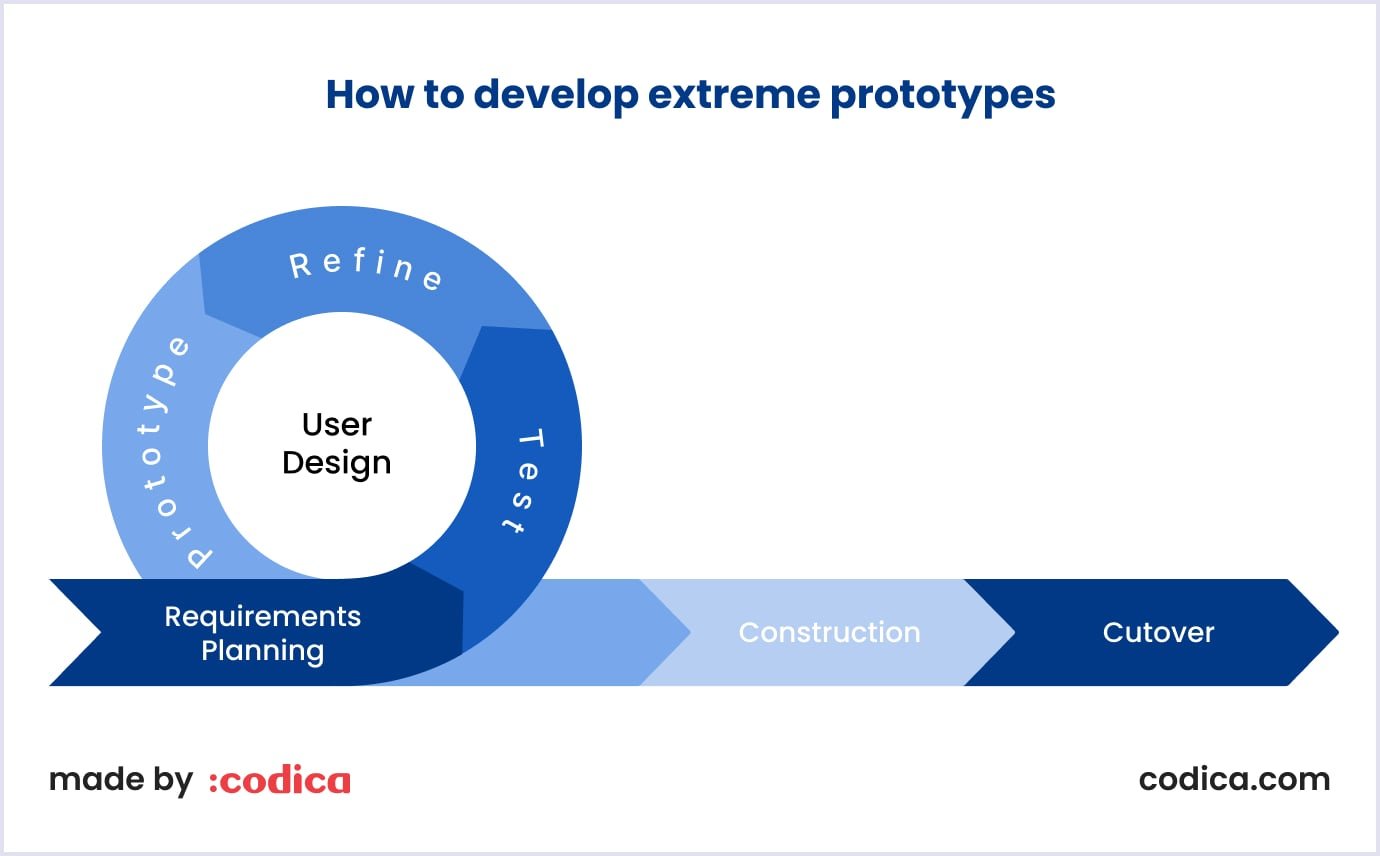
When to choose a prototype?
Although prototypes are different from PoC vs MVP, there are still many scenarios in which they can and should be used. Thus, there are several cases where the prototype development process can prove beneficial.
1. When the project is complex.
Sometimes, the project tends to grow unexpectedly big, with many moving parts. Thus, prototypes may come in handy to keep track of different functionalities and organize everything. For complex projects where the requirements aren’t entirely clear or involve innovative features, prototypes help visualize and validate concepts before full development.
2. In cases with uncertain requirements.
In the dynamic software development environment, requirements and ideas tend to change or may not be fully defined. Thus, prototypes provide flexibility for the product, allowing a team to verify changes and decide whether to implement them quickly.
3. Stakeholder communication.
Prototype in software development serves as an effective tool for communicating ideas and concepts among stakeholders, aligning expectations, and fostering collaboration. With their help, investors and stakeholders can clearly see the project’s growth, plans, and make more informed decisions based on what they see.

Prototype vs MVP: the difference between them
It is essential to understand that MVPs and prototypes have different goals, and they should be utilized at different product development stages. This contributes to the crucial difference between these approaches.
For example, our team created an MVP to help the customer make a basic kids activities marketplace without spending too much money. This approach lets them test their idea and marketing message to reduce development risks.
Our main goal was to assist David Watkins, the Founder of PlanMyKids, in figuring out the essential features for the project. These features should be sufficient for testing the marketing message and value proposition. It was important to select the right features from the start because both the client and our team wanted to avoid making the solution too complex.
Now, let’s outline the main difference between MVP and prototype in the table below.
| Prototype | MVP | |
| What is it? | Visual presentation of the proven idea | A basic workable version of a product |
| What do you create it for? | To define basic features, structure, and user workflow | To present an early product version to users |
| How long does it take to develop it? | 1 - 4 weeks | 3 - 5 months |
| What features should it use? | UX design, does not include UI | Core features, including simplified UX/UI |
| When should you choose it? | When you need a draft for further development | When you need to launch early and get feedback from customers |
| How do you test it? | Internally and with a small target group | With target users |
| When do you show it to investors? | Seed/A round | A/B round |
Conclusion
While comparing prototype vs MVP, we can outline that they are both valuable approaches to validate and verify the assumptions about your business idea, particularly startup prototype development. Each method is crucial in developing and defining what and how to build. However, they have distinct goals in the design flow.
A product prototype only displays the functionality and does not need to operate entirely. On the other hand, an MVP is already a functional product, albeit simple, ready to go on the market. It could be further improved and scaled.
At Codica, our experts have been helping clients launch projects of different stages and difficulties, from product idea validation and MVP implementation to scaling, further development, and support. You can see it in our portfolio. Also, contact us if you need help creating an MVP or a prototype!
